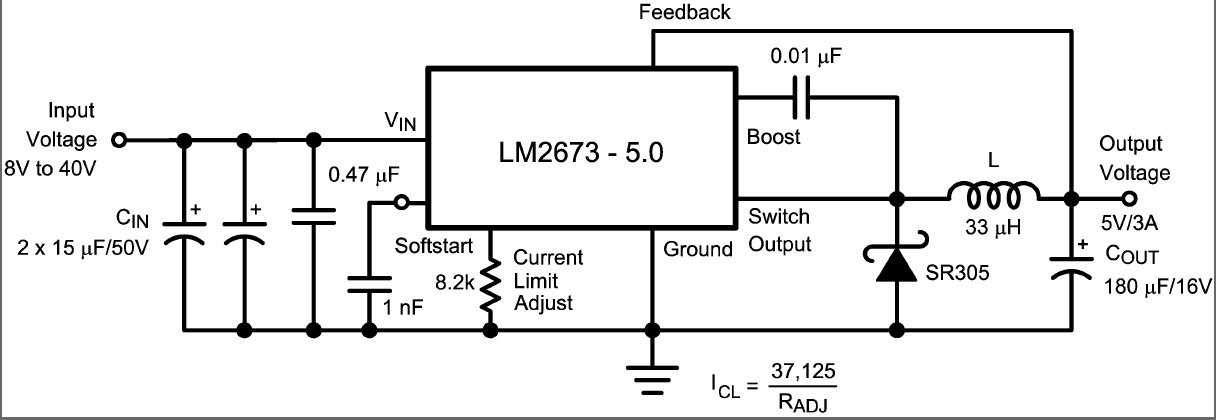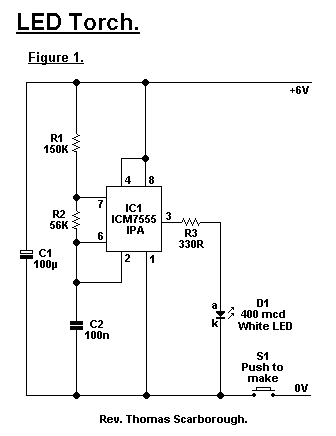
Voltage Monitor Circuit

The adjustable voltage monitor can be used to check whether the voltage in a circuit remains within a given range. If the DC voltage is less than the voltage at pin 5 of U1-B, then LED1 will light. If the voltage is over 5V, LED2 will light. If the voltage is within the window set by R4 and R5, neither LED will light. This circuit is useful as an under-or-over voltage monitor.
The adjustable voltage monitor circuit functions as a reliable tool for monitoring voltage levels within a specified range. It primarily utilizes an operational amplifier (U1-B) configured as a comparator. The circuit is designed to illuminate LED1 when the monitored DC voltage falls below a predetermined threshold set by the reference voltage at pin 5 of the operational amplifier. This feature serves as a visual indicator of under-voltage conditions that may affect circuit performance.
Conversely, when the monitored voltage exceeds 5V, LED2 activates, providing a clear indication of over-voltage conditions. The thresholds for these indicators are determined by the resistor values of R4 and R5, which create a voltage divider that establishes the reference voltage levels for the operational amplifier. In scenarios where the monitored voltage resides within the safe operating range defined by these resistors, neither LED will illuminate, indicating that the voltage levels are stable and within acceptable limits.
The circuit's utility extends to various applications where voltage monitoring is critical, such as power supply regulation, battery management systems, and protection circuits for sensitive electronic components. By providing immediate visual feedback through the LEDs, the adjustable voltage monitor enhances the reliability of electronic systems by allowing for prompt corrective actions in the event of voltage irregularities. The adjustable voltage monitor can be used to check whether the voltage in a circuit remains within a given range. If the dc voltage is less than the voltage at pin 5 of-Ul-B, then LED 1 will light. If the voltage is over 5V, LED2 will light. If the voltage is within the window set by R4 and R5, neither LED will light. This circuit is useful as an under-or-over voltage monitor.
The adjustable voltage monitor circuit functions as a reliable tool for monitoring voltage levels within a specified range. It primarily utilizes an operational amplifier (U1-B) configured as a comparator. The circuit is designed to illuminate LED1 when the monitored DC voltage falls below a predetermined threshold set by the reference voltage at pin 5 of the operational amplifier. This feature serves as a visual indicator of under-voltage conditions that may affect circuit performance.
Conversely, when the monitored voltage exceeds 5V, LED2 activates, providing a clear indication of over-voltage conditions. The thresholds for these indicators are determined by the resistor values of R4 and R5, which create a voltage divider that establishes the reference voltage levels for the operational amplifier. In scenarios where the monitored voltage resides within the safe operating range defined by these resistors, neither LED will illuminate, indicating that the voltage levels are stable and within acceptable limits.
The circuit's utility extends to various applications where voltage monitoring is critical, such as power supply regulation, battery management systems, and protection circuits for sensitive electronic components. By providing immediate visual feedback through the LEDs, the adjustable voltage monitor enhances the reliability of electronic systems by allowing for prompt corrective actions in the event of voltage irregularities. The adjustable voltage monitor can be used to check whether the voltage in a circuit remains within a given range. If the dc voltage is less than the voltage at pin 5 of-Ul-B, then LED 1 will light. If the voltage is over 5V, LED2 will light. If the voltage is within the window set by R4 and R5, neither LED will light. This circuit is useful as an under-or-over voltage monitor.





